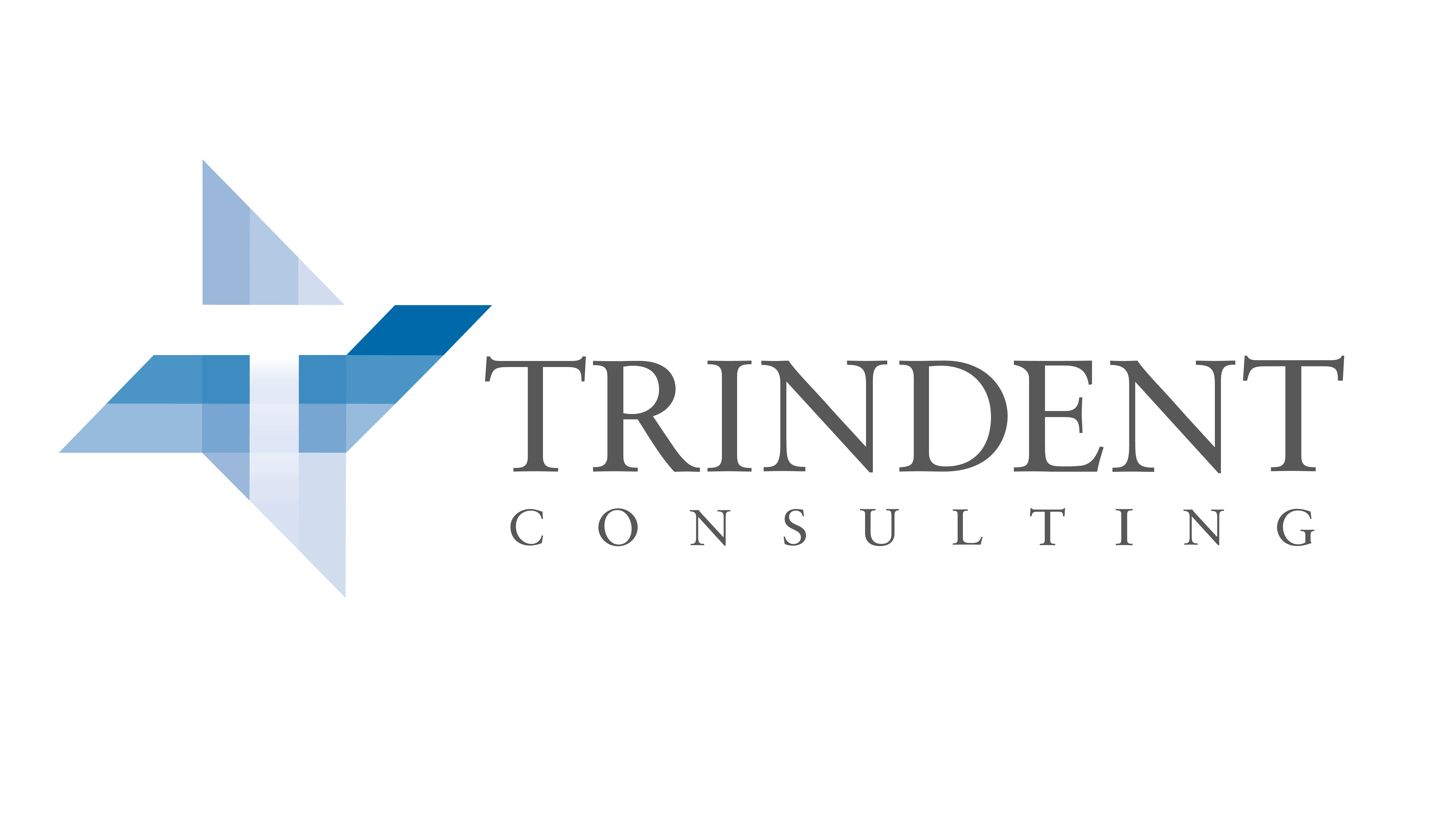Coding for Consultants
Companies that are frequently associated with coding and programming are tech giants such as Google, Apple, Facebook, Amazon, and Microsoft (GAFAM). However, as companies digitize their businesses there is often more data than can be consumed. This has resulted in coding becoming one of the most important job skills for professionals across many industries including management consultants.
Like GAFAM and major banks, consulting firms have either been building or aggressively expanding their data analytics department. They are seeking individuals who can design algorithms and construct complex models. A dedicated analytics team that works with general consultants to analyze large data has proven to drive business decisions for clients; I have personally found that the ability to analyze data, develop applications, and create tools to enhance a client’s business are skills that are invaluable at many points during client engagements. While I agree that a dedicated analytics team is useful and perhaps essential to being competitive in the industry, I believe that all consultants should have some general knowledge and proficiency in coding.
Data analytics beyond excel
Most generalist consultants neither code in Python or R nor do they use SQL for database management. Fluency in manipulating data on Excel is often the base requirement, but it is time to expand beyond this skill set as the world is becoming faster and more automated. As we know it, automation will have a profound influence on the future of all industries; machines will be able to perform an increasing number of tasks both efficiently and simultaneously, and if consultants are not able to equip themselves with skill sets that support this change, it makes it difficult to truly be effective and provide value to our clients.
Excel has gained extreme popularity since its inception in the 80s and it has become the go-to tool for all types of data analysis. However, many of us do not stop to think whether it is the right tool for the task at hand. While Excel is a great mass-market tool that provides the power of statistical analysis in a relatively user-friendly way, it does not separate the numbers from the process which makes it difficult to follow the logic behind an analysis, find the error, and manipulate a spreadsheet that someone else has created. Furthermore, it can be relatively slow when handling large data sets as many of us know.
That said, my challenge is for consultants who are unfamiliar with Panda and Python or R to learn something new – try to develop a basic understanding of data visualization, statistical analysis, debugging, and commenting on codes using these tools. Learning to code can be intimidating but it is a form of problem-solving that will get better with practice. Finally, while it is up to the individual to be committed to learning something new, I believe that it is worthwhile for consulting firms to invest in their staff by providing the necessary tools and training for coding.
The author of this blog, Kevin Kim is a Senior Consultant at Trindent Consulting
ESG Drives Oil & Gas M&A Activity

Concerning production, the recent increase in rig count has been driven by private E&Ps, not only to enable them to benefit from higher crude oil prices but to make themselves more attractive takeover targets. In contrast, many publicly held E&Ps are facing ESG-related pressures from investors and have reined in their capital spending, returning more money to shareholders (via stock buybacks and dividends), and recently, directing more of their cash flow into their bank accounts. This reluctance of many publicly owned E&Ps to invest more in drilling, even in this environment of higher crude prices, has been a significant factor in slowing U.S. production gains.
The purpose of the preamble was to bring
to your attention how prevalent ESG issues have become among the factors
influencing prices and production levels. The growing
significance of ESG has caused upstream, midstream, and downstream players to
incorporate these issues into their strategies and operations.
For example, the
increase in crude oil prices has supported a rise in energy stock prices.
However, many investors, lenders and others remain wary of oil and gas
companies, not only based on the energy industry’s historic volatility but also
the tremendous social, political and financial pressures that hydrocarbon
producers, midstream companies, and refiners face in demonstrating that they
are addressing environmental, social, and governance issues. ESG has come to
the main stage in the U.S., Canada, and elsewhere, and will influence Oil and
Gas (O&G) activity in the short-term and beyond. Energy companies that
ignore ESG issues run a significant risk. As we have indicated before, it is
important for our clients to focus on their core upstream, mid-stream and downstream
activities while firmly grasping the reality of ESG as a key business strategy.
Mergers and Acquisitions in today’s O&G markets, for example, discuss the strategic and financial benefits of the deal and also highlight the level of ESG practices. The new message to investors, lenders, and the broader public includes awareness of the importance of climate change, workplace diversity, and other ESG matters, addressing those issues and ensuring plans to do more are known.
In net, ESG is now a very important concern for all participants in the O&G industry. What does it involve?, How is it gauged? and How did it so rapidly become one of the biggest issues facing the O&G sector? One thing is clear: ESG cannot be set aside, deferred, or ignored.
The Role Of ESG:
So what does ESG mean to O&G
upstream, midstream, and upstream operations? Let’s start with the E for
“Environment”. For the O&G sector in general, E is all about reducing carbon
emissions or otherwise ensuring impacts on the planet in general are mitigated.
Examples are using drilling strategies designed to reduce how much ground needs
to be disturbed; methane leak-detection programs; piping instead of trucking
crude oil and produced water (to reduce diesel use); recycling and re-using
produced water; reducing or eliminating gas flaring and using wind or solar
power to run drilling operations, pipeline pumps and compressors, etc.
The S is for “Social”. What a growing
number of investors, lenders and others are looking for in this realm is
evidence that the company is prioritizing worker safety and health; taking
steps to develop a diverse workforce and involving itself in the community in
real and helpful ways.
The G stands for “Governance”, which
involves issues like reporting transparency; compliance programs; executives
and managers diversity; and expanded shareholder rights.
Perhaps the first question that comes to
mind is: why are investors and lenders not focused on ensuring the quality,
viability and return of the company’s assets, as well as traditional financial
metrics such as earnings, debt-to-equity ratio, and free cash flow? Another
question that arises is how can investors and lenders know whether a company’s
ESG efforts are real or just window-dressing given the confusion surrounding
ESG issues?
The answer as to why ESG matters to oil and gas companies is simply access to capital. Focus on ESG is increasingly demanded by investors and lenders. This attitude is not limited to activist investors. In our current reality, social and political pressures will certainly influence where the money will flow. Also, large investors usually focus on the long-term view which nowadays factors in the perception of the company’s readiness to adapt to energy transition pressures and mandates . In today’s financial markets, companies that strive for operational efficiency, promote diversity, and practice best-in-class governance are perceived to perform better financially. Changing demographics also play a role. For example, in general, millennials are limiting their investments to companies with “favorable” ESG rankings and many avoid fossil fuel-related investments as a matter of principle. The next question is on which basis can investors, lenders and others judge whether an energy company is good or bad on ESG issues? There isn’t a widely recognized ranking or index. According to the literature, there are many different lists developed by the financial sector and other specialized companies in the area, each with their own criteria and approaches. The consensus first step in establishing ESG ratings and rankings should be to generate listings of companies by categories and subcategories. For example, we start with energy companies as the category and midstream and refining companies as the subcategories. We would also have for example, electric utilities, gas utilities and renewable energy as further subcategories. The reasons to divide and subdivide companies into buckets are clear: energy companies face a very different set of ESG issues and concerns than, say, a hospital, an electronics manufacturer, or a food packer.
Due to ESG’s increasing level of importance, we have recognized the need to be ready to support our clients in this realm. ESG issues are taking on an increasingly significant role, not just in enhancing companies’ environmental stewardship, but also in improving their position with investors, lenders, and regulators, and even impacting employee talent acquisition.
The author of this article Ivan Parra is a Senior Consultant at Trindent Consulting.
Sustaining Process Improvement

Previous articles in this series dealt with the challenges of identifying outdated and inefficient processes, the effects that suboptimal processes have on the profitability and competitive position of a company, as well as some of the tools that can be used to identify and improve those processes. But what happens once you implement those improvements?
This article will look at the importance of sustainability
and how a company can sustain the process improvements they’ve achieved.
Post-Achievement Syndrome
Every implementation project is destined to go past
the active phase and enter the phase of sustainability, by which time, all processes,
systems, and behaviors have been brought into a desired final state. The analysis has been performed and
documented, method changes have been identified and implemented, tools have
been deployed, skills have been aligned, training has been conducted, active
management introduced, and savings and improvements brought to target levels. After this hive of activity and challenge, it
seems well-deserved to sit back and enjoy the results. However, there is danger in succumbing to such
post-achievement syndrome, and the price could be the reversal of some of the
improvements.
There are three routes that a company can take
post-implementation; continue improving, maintain at the same level, or revert
closer to the pre-improvement stage. And
with any process that has a human behaviour component, there is an inherent
predisposition to revert to the old ways of operating, especially if the effects
of the improvement haven’t yet become apparent.
The Steps to Sustainability
How then, can an organization sustain
the improvements they’ve implemented?
At Trindent Consulting, sustainability
is one of the values
we deliver on all engagements. With these four steps, we help our clients
sustain and grow engagement achievements:
- Measure. Sustainability actually starts long before the engagement enters the sustainability stage. It starts at the baseline evaluation done before improvements are even in place. By establishing a rigorous practice of tracking and reporting all relevant KPI, as well as their impact on financial statements, a baseline is created to allow for precise measurement of implementation results and to control subsequent sustainability.
- Champion. We create the position of Sustainability Manager at the beginning of a client engagement, and train that person rigorously on our approach. Sustainability Managers, while being part of the client organization, effectively function as part of Trindent team for the duration of the engagement. After implementation is complete, we leave the person with the responsibility of ensuring that results are sustained.
- Include. We make sure that front-line participants of the business process under improvement are involved in sustainability collaboration. By involving staff, higher acceptance rates are realized, and the improvements become more likely to be sustained post-implementation.
- Audit. Once the engagement is in sustainability mode, periodic audits are the best way of ensuring sustainability. Trindent Consulting always performs an audit six months after engagement completion.
The Importance of Sustainability.
Sustainability is important for the same reasons that an improvement project is undertaken in the first place – the detrimental effects that inefficient processes can have on organization’s profitability and competitive advantage. Changing these processes isn’t enough because even the most well-performed implementation loses its value if it can’t be sustained and fully adopted as the new normal.
In the next article in the series, we shall look at
conducting audits on process improvement implementations.
Productivity and the Interruption Disruption
In today’s digital age, the real estate that businesses pursue is not property, but attention. We live in an era of information and distraction, with myriad points of stimuli constantly competing for our attention. Nowhere does this have more impact than in the workplace where its effect on productivity can be significant.
Not All Interruptions are Adverse
Interruptions are a normal part of a workday. Things like answering phone calls, speaking to colleagues, or replying to email all take us away from some task at hand, but they are expected and accounted for. There is a negligible amount of lost time attributed to these factors, and they are often a necessary part of the workday. If, for example, a discussion with a colleague to get clarity on a subject is necessary to complete a given task, then the interruption is a productive rather than a disruptive one.
It’s when the interruptions become overly frequent, or if they are ones that can be made superfluous by process improvements, that they become a real disruption to the productivity of staff. Such was the case with a former Trindent insurance operations client.
When Interruption Disrupts Productivity
In one past Trindent engagement, a department that processed new business insurance applications had several targets they needed to meet. The staff in this department were given two concurrent responsibilities – they had to handle new application reviews at the same time as they needed to field phone calls from agents.
At an earlier point in the company’s history, both the application volumes and call volumes were manageable enough to allow staff to handle them at the same time without tangible disruption to productivity. However, with the steady growth of the business and an increase in the volume of work, it became clear that the process did not scale well, and staff struggled to achieve daily goals and targets.
Our observation for this client showed that the task of processing applications was being disrupted almost 25% of the time by agent phone calls. Uninterrupted cases took an average of 9.5 minutes to complete, while interrupted ones averaged an almost 15 minute processing time, a loss of almost 5.5 minutes per case.
This multitasking started to cause significant downstream challenges. Not only were the agent calls costing lost time in the application process, but a higher error rate and an increase in rework became a factor as staff missed steps in the verification process because of the pause and resume style of their workflow. As time spent on each application increased and productivity went down, a bottleneck effect was created, and staff fell further behind.
The Disruption Can Be Fixed
The key to fixing interruption disruption to productivity is to identify the problem – in this case, the pause and resume style of workflow caused by competing responsibilities – and to implement process improvements aimed at addressing and mitigating the disruption.
Click here to read more about Trindent’s approach to streamlining workflows and minimizing productivity disruptions in the financial services sector
Why Is Accurate Reporting And Data Crucial For Call Centers?

Call centers have access to large volumes of information including customer data, workforce management, and performance metrics. Among the various metrics or Key Performance Indicators (KPIs) that one can track in a call center, KPIs such as login time, received calls, hold time, after-call wait time, scheduled breaks, sales performance, transfer rate, and operational cost can provide valuable insight into customer behaviour.
Call center managers have a key role in enabling their team to successfully track these KPIs, record data, and generate reports. But, with numerous reports and systems mixed-up together, getting accurate and consistent reporting becomes an enormous problem for the call center managers. Managers often lose sight of what’s important amidst all their priorities and the sheer volume of this data can blindside them.
Too Many or Too Few KPIs:
Even though time-consuming, managing and tracking KPIs is a crucial exercise. Prioritizing the right KPIs enables monitoring results and drives specific behaviors that lead to the desired outcomes. Furthermore, narrowing priorities enables managers to focus their team's energy on specific work that will improve the company’s overall performance and drive results.
The key to understanding how to identify and prioritize the team’s efforts in the right direction is in understanding the fundamentals of productivity. The big rock theory by Dr. Stephen R. Covey explains this well.
Finding Your Big Rock:
The Big Rock Theory is a productivity concept popularized by author Dr. Stephen R. Covey. In his book First things First. simply put, the Big Rock is your priorities - the things that really matter and are critical to your organization. You can identify your big rocks by using the SMART Goals (Simple, Meaningful, Actionable, Realistic, and Trackable) framework to help provide clarity and set expectations to get the desired results.

To find the big rock and identify priorities or KPIs, here’s a few questions that managers need to ask themselves:
- Is the KPI relevant to the team, client, or business goals?
- Do the employees have any control over the performance metrics?
- Is the KPI easy to measure?
- Does the KPI establish a specific and easy-to-understand performance goal?
- Can the set goals using this KPI be met in a reasonable amount of time?
- Is the KPI necessary for regulatory compliance standards?
Trindent works with financial services clients in identifying relevant KPIs that align with the organization’s goals. In Addition, we design systems and dashboards to track these KPIs by providing a holistic overview across an organization’s various programs and keeping the managers and staff informed and accountable for achieving results. Learn more about our results.
The author of this blog Falastine Kilani is a Senior Consultant at Trindent Consulting.
ESG in Oil & Gas & The Road Ahead

In the previous blogs in this series, we discussed how environmental issues are a key consideration when investors and lenders evaluate the performance of energy companies in ESG. The leading environmental issue facing the O&G sector today is greenhouse gas (GHG) emissions, which are generated at every step in the production, processing, delivery, refining, and consumption of fossil fuels.
Environmental issues are a key consideration when investors and lenders evaluate the performance of energy companies in ESG. The leading environmental issue facing the O&G sector today is greenhouse gas (GHG) emissions, which are generated at pretty much every step in the production, processing, delivery, refining, and consumption of fossil fuels. In the view of the ESG authorities, if you care about sustainability, you must measure and track your carbon emissions before attempting to reduce your carbon footprint. But you have to look across your entire business, and emissions scopes—often colloquially referred to as “scope emissions” or scope 1, 2, and 3 to help bucket or break down the emissions sources and behaviors.
- Scope 1, which are GHGs directly caused by the facilities and equipment that a company owns or controls;
- Scope 2, which are “indirect” GHGs from the generation of electricity the company buys from others (such as the local utility) to power company operations; and
- Scope 3, which are all other indirect GHG emissions that occur in the company’s entire value chain.
GHG Emissions In Production Plants
Producers and refiners can do very little to reduce GHG emissions from the consumption of their products unless they curtail production. Thus, they are concentrating their efforts on reducing emissions from their operations and the power sources they depend on. Refiners have another option too: investing in facilities that produce renewable fuels, such as renewable diesel, a lower-carbon alternative to one of the refining’s main products, conventional diesel.
Refiners, face the hard, undeniable reality that their facilities consume a lot of energy and the consumption of their products is one of the main generators of carbon dioxide (CO2), the primary GHG. In general, refiners have been taking a multipronged approach to improving their environmental performance and ESG ratings, with a focus on the production of renewable diesel.
Unlike upstream and midstream companies, the refining sector benefits from laws and regulations which provide financial incentives to decarbonize their products. Refiners already have a strong economic incentive to invest in the assets and programs to reduce GHG emissions. Clear economic incentives are fundamental to influence the extent and speed at which transition fuels are developed.
The Road Ahead
Given the worldwide focus on reducing emissions of carbon dioxide (CO2) and other greenhouse gases (GHGs), is clear that those involved in producing, transporting, processing, and refining hydrocarbons need to stay informed of ESG developments.
In the future, we need to explore other aspects of ESG issues and how Low Carbon Fuels Policies are affecting fuel usage in the transportation sector. There is much to discuss, given the increasing number of laws and regulations being implemented in the U.S., Canada, and other parts of the world, aimed at decarbonizing the transportation sector. ESG-related laws and regulations are already changing how our refiner clients do business and are expected to continue significantly impacting the O&G sector going forward.
Click here to learn more about how we can help your organization address the leading environmental issues faced in the O&G sector.
Surrogating Online Analyzers With A Real-Time Arithmetic Prediction

Online analyzers can be an effective instrument in providing real-time information for refineries to monitor their current performance in terms of unit operations, blending, emission, etc. While being very useful in providing valuable information – they can also be expensive, time-consuming to maintain, and inaccurate. These days, a lot of technical solutions are proposed to refining operators to install online analyzers in solving a business challenge, which usually involves a cumbersome, time-consuming process including initiation, feasibility study, approval, installation, testing, and implementation.
When working with refining operators around the world, we often see the misconception that an online analyzer is a must-have solution to enable mature process control – which is not necessarily the case. With the advancement in data analytics and modeling, we have successfully supported our clients to install Online Analyzer Surrogates in the past couple of years – a Real-Time Arithmetic Prediction that does the work just as well as an online analyzer.
To enable
this opportunity, there are several prerequisites that the refinery needs to
achieve before installing this solution:
- Commitment to continually improving their modeling practice in their modeling software such as linear programming and blend optimizers
- Availability of a real-time data analytics platform that can retrieve key information such as lab data, unit temperature parameters, crude information, etc.
- An enthusiastic team willing to learn new knowledge and take ownership of the data analytic solution to ensure long term sustainability
A typical
solution can be installed within 2-3 months without capital expenditures or any
modification to existing refinery infrastructures. Our experience indicates
that such a solution can often achieve a measurement accuracy as good as an
online analyzer.
If you are looking for a cost-effective solution that can be installed within a short period of time to monitor your refinery’s performance on a real-time basis – this approach may just be the right answer for you.
The author of this blog Kai Y. Wan is an Engagement Manager at Trindent Consulting.
Why Implementation Matters

Strategy is a popular subject in business
schools: it has a certain air of intelligence and sophistication about it. But it’s a term that’s overused without being
well understood. If a poll were to be
conducted, most business school students would probably not be able to give a
proper definition of what “Strategy” is.
And they certainly wouldn’t be able to explain how strategy alone
doesn’t bring about business success.
“Implementation” is another term everyone
thinks they understand, but it has significantly less excitement about it and
so it gets a lot less little attention. While the topic deserves a book rather than a
short article, let’s take a simple look at why business implementation is, in
fact, as important as strategy.
Don’t Bother Me with Details!
Imagine you have a great idea on Monday morning: You decide to spend the upcoming weekend on the Mayan Rivera. Your plan doesn’t have a single flaw and brings benefits from all sides – you can financially afford it, you’ll get a well-deserved rest, spend quality time with your significant other, get a lot of the Vitamin D you’ve been lacking, and best of all, you’ll have the perfect excuse to skip that family gathering you’ve been dreading. So, you get really excited and… do nothing about it all week.
By the time Friday rolls around, it’s too late to put the plan in motion, and on Saturday, instead of listening to the soothing sounds of waves while drinking a frozen daiquiri, you are listening to your uncle’s terrible jokes and eating your sister-in-law’s dry meatloaf.
This is a very simple example of a great
strategy…with no implementation; and it well illustrates why the two are
equally important components of any successful plan.
Simply put, without implementation, a great strategy bears no value.
Let’s Talk About Business
The business world equivalent of this
situation occurs on a regular basis but on a much more complex level. Not
taking anything away from the importance and complexity of determining where a company
needs to be in five or ten years, that vision is useless without these four implementation
steps:
- Putting together a detailed plan of how to get from the current state to the envisioned future state;
- Setting the proverbial wheels in motion;
- Providing feedback and making adjustments to the strategy as its implementation rolls out; and
- Seeing the plan through to successful completion.
These steps are, of course, a very simple
outline, and each needs to be broken down into myriad specific and necessary activities.
But the overall idea remains that taking
these steps means implementing the great strategy your company has developed
and putting your business on the path to success.
Can One Make A Career of
Implementation?
A recent study of CEO LinkedIn profiles revealed that a good number of CEOs held positions related to implementation as their first job, with the most popular one being a consultant. While there is no set path that guarantees career success, and not everyone is cut out to be – or aspires to be – a CEO, being a management consultant in implementation clearly holds promising opportunities.
Trindent Consulting offers stellar opportunities in business implementation consulting, with room for growth and potential to learn the implementation ropes and further develop top consulting skills.
Visit our careers page for more information.
The Search For Perfection Broken Down
Understanding the 5th Principle of Lean Methodology

The term perfection is defined as “the state of being complete and correct in every way”. In this literal definition, the concept of perfection can be erroneously perceived as an unobtainable objective, causing it to be rejected. However, the Pursuit of Perfection, the 5th principle in lean methodology is not meant to be a paralyzing ultimatum, but instead a powerful concept that advocates the adoption of continuous improvement.
The Cons of “Perfection”
In the context of organizational process improvement, if the interpretation of perfection is taken to its literal extreme, it becomes more harmful than beneficial by causing either perfection paralysis or perfection fixation.
Perfection paralysis happens when every idea that falls short of perfection is seen as a “fail”, which then becomes a roadblock to action or forward momentum in developing improvements to current state processes. When there is a belief that only an incredible, awe-inspiring method change can enhance a process, anything less than that magic silver bullet gets rejected.
Perfection fixation refers to ignoring the law of diminishing returns. When the pursuit of perfection becomes a mission to do anything at any cost to bring a process to a perfect end-state, there will inevitably come a tipping point where the amount of time and effort invested begins to outweigh the benefits gained. Once that line is crossed, an effort will begin to increasingly outweigh the benefits, until the returns will be diminished to insignificance. Simply put, it is the problem of not knowing when to stop.
This dichotomy has an insufficient effort on one hand and excessive effort on the other, but both leading to the same unsatisfactory results. The happy medium lives in the 5th principle of Lean methodology, where the pursuit of perfection is defined as an ongoing process rather than an end goal, whose target is continuous process improvements rather than a final state of perfection.

Breaking Down the “Pursuit of Perfection”
The 5th principle of Lean methodology essentially tackles behavior. Its focus is a continuous improvement mindset that organizations need to adopt into their culture. In Lean, the first four principles (define value, map the value stream, create flow, establish pull) must be completed in sequence before the continuous improvement approach of the 5th principle can be implemented. The values and mindset of change management that are required to successfully adopt the 5th principle comes from the practice and completion of the first four.
The five principles follow a cycle format because completing them is not a one-time exercise. This is a dynamic methodology, not a static model. Similarly, the pursuit of perfection is not a destination, but a mindful journey of continuous improvement.
The 5th Lean principle is the pursuit of perfection not the pursuit of perfection.
Cost Management and Optimization for Midstream Companies: Maintenance Costs

Midstream
companies are a key link in the oil and gas sector and provide the
transportation network that brings hydrocarbons from producers to refiners and
ultimately to consumers. Despite having this
important role, midstream companies are not without challenges and they often
suffer from inefficiencies that impact the bottom line.
Most of the inefficiencies in this asset-intensive sector are increased operating expenses (OPEX) related to maintenance costs and inventory management. This article will focus on maintenance costs while a separate article will discuss inventory management.
Are
Inefficiencies Impacting Your Margin?
In answering this question, one important metric to examine is the ratio between preventative maintenance (planned) and reactive maintenance (unplanned) by both count and cost. The ratio is important as reactive maintenance is often three to ten times more expensive than preventative maintenance and can result in employees feeling overwhelmed and out-of-control. A best-in-class ratio is six preventative work orders for every one reactive work order (85%:15%); however, two preventative work orders for every one reactive work order is considered achievable for the average midstream company (67%:33%).
Another important metric is an annual calculation of Total Maintenance Cost over the Replacement Asset Value. The Total Maintenance Cost should include all costs associated with labour, parts, lost throughput, and other relevant maintenance costs. The Replacement Asset Value should include the cost of purchasing new equipment and the installation costs. This metric identifies the effectiveness of a maintenance program; the lower the value, the more effective the maintenance program is. Best-in-class targets are around 2% depending on the type of equipment. However, if the value is over 100%, this indicates that the equipment should likely be replaced rather than repaired, barring any safety, environmental, or other considerations. Even a value as low as 20% indicates the maintenance program may not be efficient because, at 20%, the company could purchase new equipment every five years instead of fixing it.
By focusing on preventative maintenance, midstream companies can achieve more throughput with reduced costs and improved margins. To learn more, you can read about Maintenance Planning for Success, Maintenance Best-Practices, Defect Elimination, and Work Management.
If your current metrics are not best-in-class and you need help with your Asset Management Program, reach out to our team on LinkedIn or through our Contact Us page to learn more about how Trindent can Make it Happen in your company.
The author of this article - James Greey is a Senior Consultant at Trindent.



